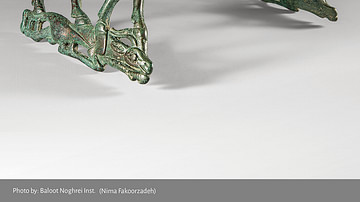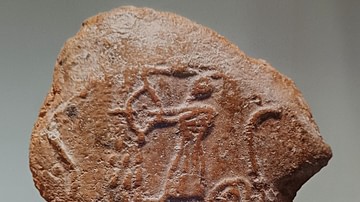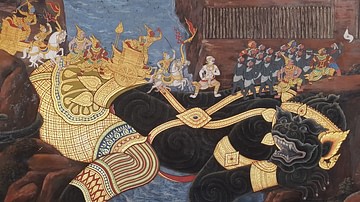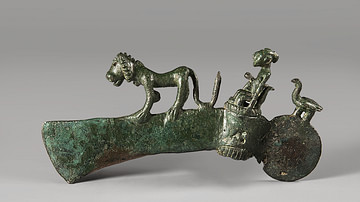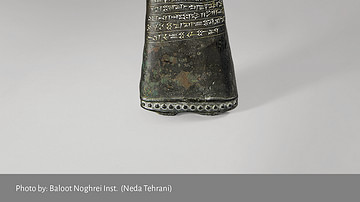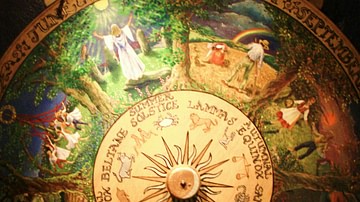Illustration
Painted brick from Baba Jan, Luristan, Iron Age III, c. 850 to 550 BCE.
National Museum of Iran, inv. no. 6735
This terracotta tile with a painted wheel is one of the c. 200 mural bricks that once decorated the “ceremonial rooms” of the Median castle complex of Baba Jan in western Iran. The wheel here may symbolise power acquired and asserted through excellence in fighting- and hunting skills (especially on a chariot) that the Medes were renowned for. In the 1970s, excavations in Baba Jan’s East Mound under Clare Goff unearthed an eminent hoard of Bronze and Iron Age material, including stone-founded mudbrick walls standing still after a sweeping fire that presumably forced the inhabitants to escape, leaving everything behind. Finds from Baba Jan can cover more than two millennia, but the most prominent layers date back to c. 850 to c. 550 BCE, to the time of the unification of the Medes, which led to the establishment of the earliest dynastic kingdom of Iranian history. Median material remains provide exhibits of the pre-Median art, architecture, and culture transmitted from the Assyrians, Urartians, Scythians, and Elamites to the subsequent Achaemenids and their defining construction of the Persian cultural identity.
External Links
Cite This Work
APA Style
Iran, N. M. o. (2024, March 04). Painted Mural Tile with Wheel from Western Iran. World History Encyclopedia. Retrieved from https://www.worldhistory.org/image/18581/painted-mural-tile-with-wheel-from-western-iran/
Chicago Style
Iran, National Museum of. "Painted Mural Tile with Wheel from Western Iran." World History Encyclopedia. Last modified March 04, 2024. https://www.worldhistory.org/image/18581/painted-mural-tile-with-wheel-from-western-iran/.
MLA Style
Iran, National Museum of. "Painted Mural Tile with Wheel from Western Iran." World History Encyclopedia. World History Encyclopedia, 04 Mar 2024. Web. 15 Apr 2025.

